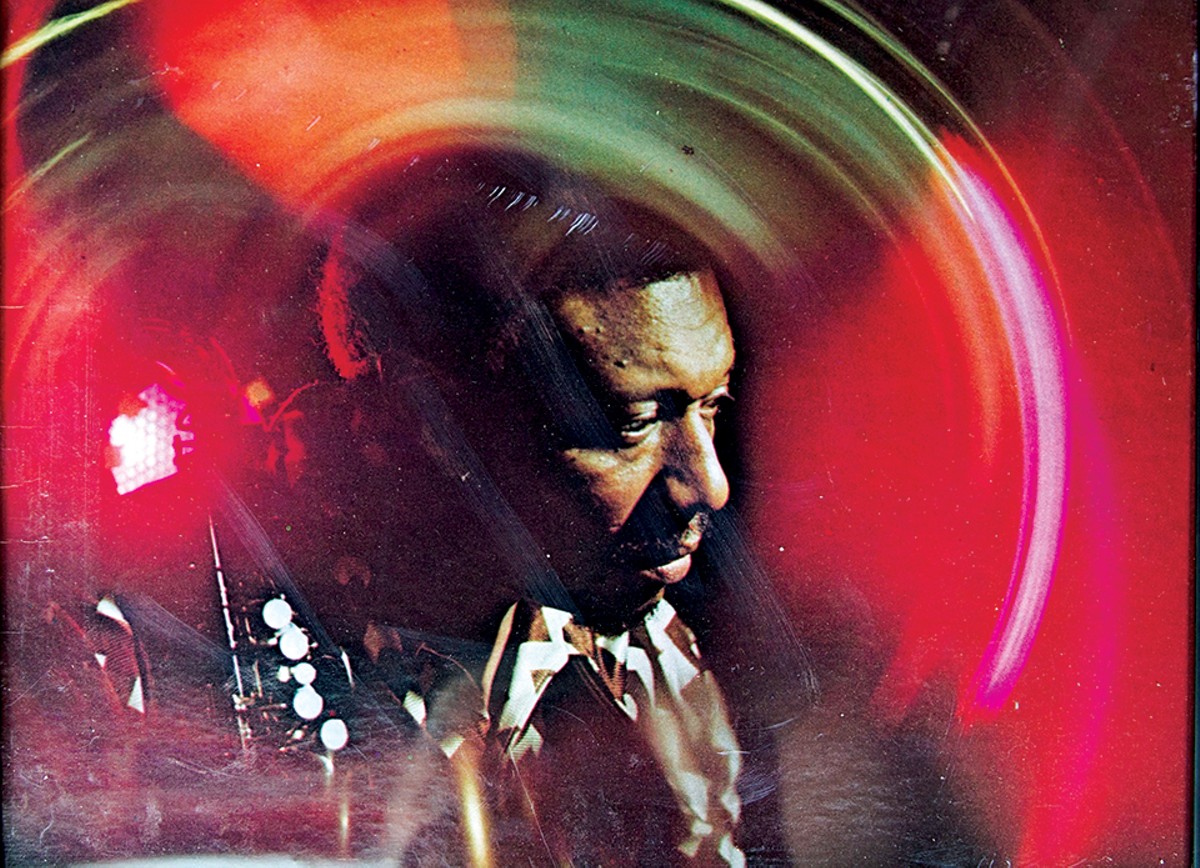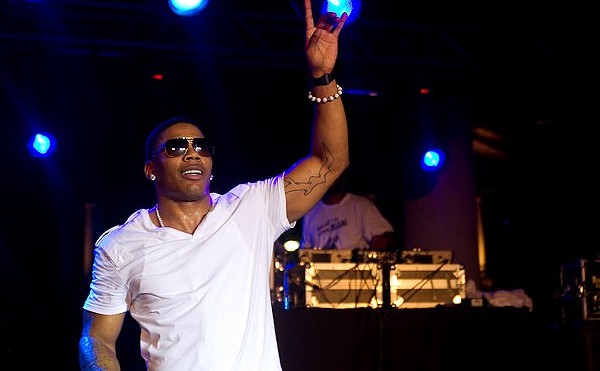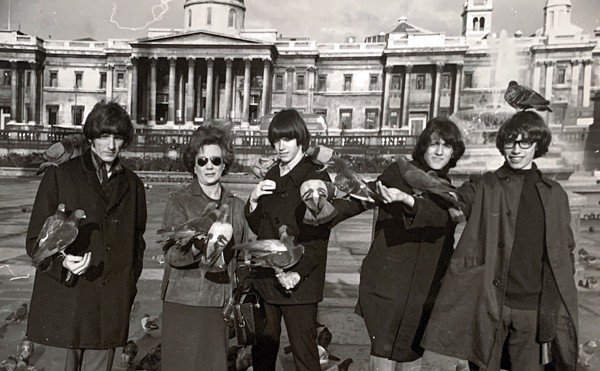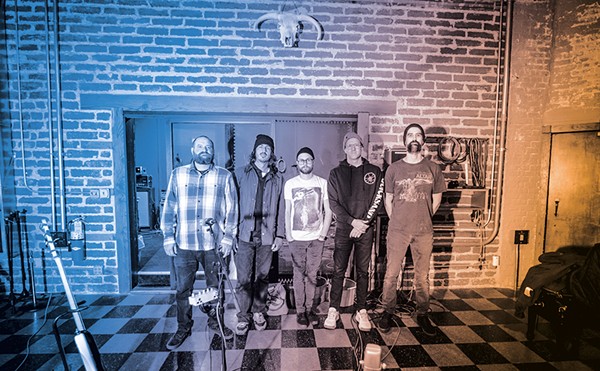The most surprising thing about the new book St. Louis Sound is the simple fact that, until now, it never existed.
Sure, there have been scholarly studies of St. Louis music history, excellent genre- and scene-focused tomes — recent examples include Devil at the Confluence by Kevin Belford (blues), City of Gabriels by Dennis Owsley (jazz), and In Concert: KSHE and 40+ Years of Rock in St. Louis by John Neiman (classic rock), and that's just for starters. But no book has ever connected the dots or charted the evolution of what makes this city, and its outlying regions, one of the most important and vibrant places for musical invention and enjoyment in the world.
St. Louis Sound changes that.
The hefty and striking coffee-table book is billed as an "illustrated timeline," a phrase that's both accurate and modest. The illustrations are extraordinary, handsomely laid out to tell their own stories, with many photos no one outside of archivists at the Missouri Historical Society has likely ever seen. Those stunning images, coupled with the witty and knowledgeable writing of co-authors Steve Pick (a veteran music writer and longtime KDHX DJ) and Amanda E. Doyle (writer of five previous books, including 100 Things to Do in St. Louis Before You Die and To the Top! A Gateway Arch Story), sprawl across 170-plus entries covering centuries of St. Louis music. Put plainly, it will change the way you think of this city and its culture.
"I knew almost everybody in the book," says Pick. "But to see them all in one place and follow this development over 100 years of recorded history is something else. The breadth just overwhelmed me. I knew these musicians as individuals, but I didn't think of them as part of a bigger St. Louis musical story."
Reedy Press, a St. Louis publisher with whom Doyle had previously worked, originally approached her to suggest the project in 2016. The book follows the model of Reedy's recently published Nashville Sound, but its soul derives from the depth of knowledge both Doyle and Pick bring to their subjects, whether they are covering legends like Grant Green and Tina Turner or scenes like the Way Out Club or the fanzines of the '80s.
The story begins in Cahokia, circa 1000, with our first-known civilization, and ends with one of the youngest bands in the book, Old Salt Union, which also happens to hail from the east side. In between, the reader is guided through all the twists and turns and triumphs and missteps of our musical heritage. Ultimately, an argument about what the sound of this city means comes into focus.
"In the steamboat entry, you might think of this freewheeling, Dixieland music. But no, not really," Doyle says as an example. "It was tightly controlled; the musicians weren't improvising. They gave St. Louis a reputation as a place where people could flat-out play. People would then want to come here and work with these musicians. I hadn't thought about that and the importance of that music. You still see that reputation for musicianship today."
While the scope of St. Louis Sound is impressive, part of the fun of a book like this is the opportunity afforded for quibbles and objections. What, no J-Kwon? Really, the experimental DIY scene doesn't get a spread? No Frederick's Music Lounge? My favorite band isn't in the index? Every book and every history has the limits of time and paper. But here, if there's anything disappointing, it's that there aren't enough gaps, there aren't enough missing figures to allow the reader to feel superior in noting their absence. And, in the end, the pure enthusiasm that Pick and Doyle bring to their subjects is more than enough to compensate for the necessary elisions.
"I wanted the book to have humor," Pick, who composed the majority of entries, says. "That goes back to my life of writing. I was influenced by Lester Bangs and Stan Lee, Creem magazine and comic books. I wanted each entry to stand on its own. Coffee-table books can have great pictures and boring words. I never wanted this to be boring. I love this music, and I loved telling this story from a point of view that hadn't been told. We mixed musicians who are known worldwide with musicians who are known only to a few hundred people here in St. Louis. Facts were important, but hopefully even if there are mistakes of facts there are no mistakes of heart."
Adds Doyle, "I think the style of the book is conversational but fairly authoritative. It's like a conversation with someone who knows what they are talking about. It should sound like something that was experienced by the author, having that first-hand experience with the music and the place. You want someone who knows a lot about musical history to not be bored by the book, but we also wanted it to appeal to a wider audience."
Because it takes a distinct chronological approach, the evolution of St. Louis music — from the social music of the nineteenth century to the icons of pre-war blues and jazz to the emergence of rock & roll and new wave and Americana — becomes a fascinating conversation across time, between music lovers and scenes and record labels and musicians who never planned to change the world from their homes in St. Louis (OK, Miles Davis probably had a plan), but who did all the same.
"It's fascinating how many times St. Louis played a key role in the development of music in general," Pick says. "From the fact that Frankie Trumbauer brought Bix Beiderbecke here, and those two guys influenced everything that came for years after. Jimmy Blanton was playing here and decided that bass could do more than play those root notes. Miles came from here and developed six different styles that are still being played today. Chuck Berry, Ike Turner, Uncle Tupelo, Nelly. They all became heavily influential, and it all started here. You don't think of St. Louis as being this creative spark place. But it is."
One of the book's most important contributions is the way it reclaims many legendary performers for this region and refocuses their story through a distinctively St. Louis lens.
"We came to realize the importance of people who were here for a minute in the scheme of things, but who touched a lot of musicians," Doyle says. "You might not think of someone like Josephine Baker as a St. Louisan, but her presence here was so important. She was here at a certain moment in time that was significant."
To accompany the release of the book, Pick and Doyle will be doing talks and signings all over town (even at the Bellefontaine Cemetery, the final resting place for some of the featured musicians) and will be hosting a festival called the St. Louis Sound Project, which features five different concerts at five different venues, spanning jazz, blues, rock, Americana and hip-hop. The authors enlisted five "curators," tastemakers in the local scene, to put the shows together, which will run March 23 to 30.
"We didn't expect to get only artists that are in the book," Pick admits. "But Finn's Motel and Marquise Knox, who are both in the book, are performing. It's a way to tie the book into now.
"There's somebody inventing something right now that's significant," he says. "The story doesn't end."






